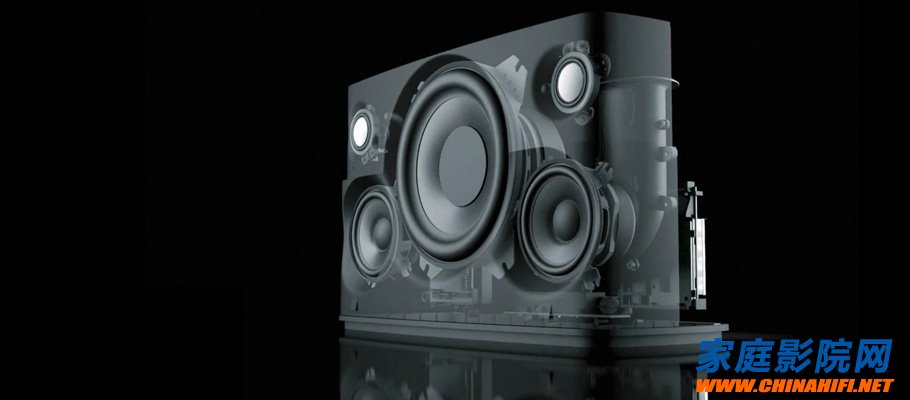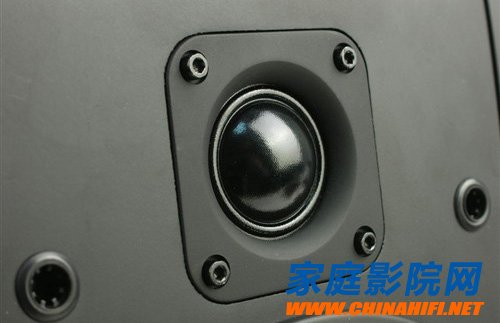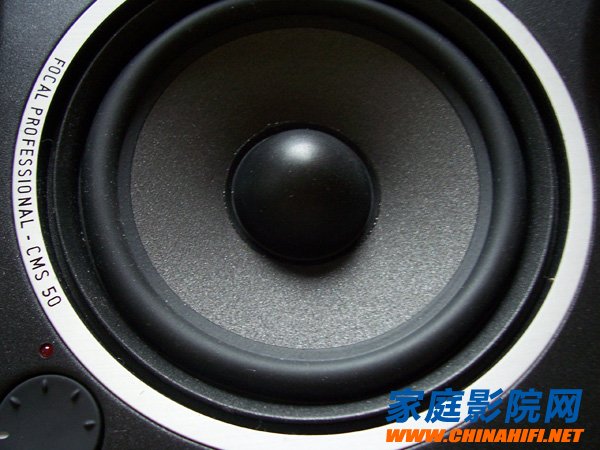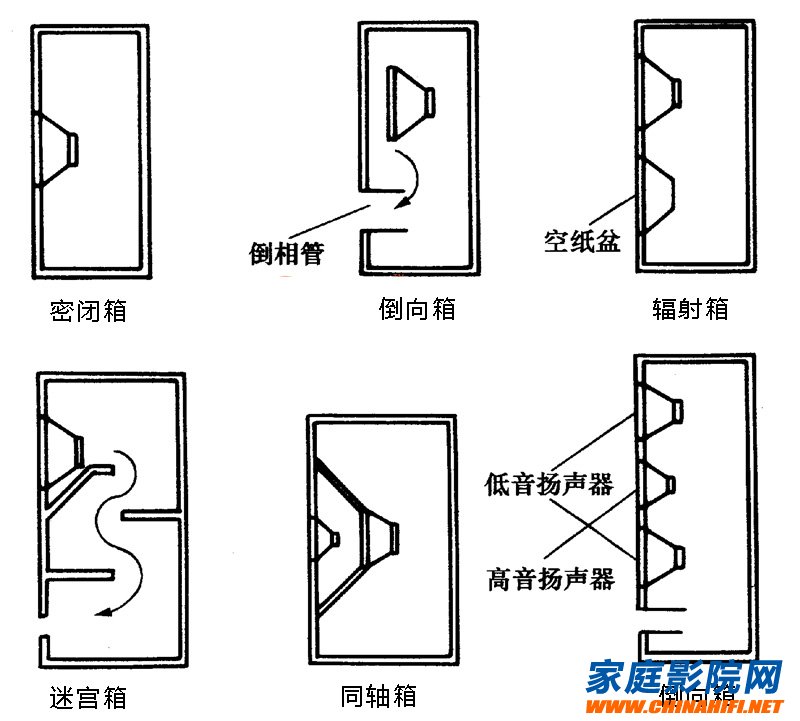
The home theater network () speaker is the terminal equipment in the AV home theater, HIFI audio system audio playback system, which is roughly composed of a speaker unit, a box and a frequency divider. The working principle is that the sound of the full-band sound is divided into frequency bands by the frequency divider, and then these several frequency bands are allocated to the corresponding driving units to sound. Therefore, under the influence of the unit's process, the adjustment of the crossover, the production of the cabinet and the designer's aesthetic ability to sound, the speakers have different sound performances. This article will introduce the structure of the speaker and the various components of the speaker, in order to help readers understand all aspects of the speaker.
Type of speaker
For the speakers that are currently available on the market, most of them are composed of the above three components. These speakers need to be driven by an external amplifier to work. Therefore, they are also called passive speakers, and passive. Speakers are also one of the most common and used speakers on the market. In addition to passive speakers, there is also an active active speaker with its own built-in electronic crossover and amplifier. This type of speaker is relatively easy to use, and users only need to give their signals from the CD player or preamplifier to work.
Therefore, active speakers are now widely used in professional recording studios and multimedia computers.
In addition, for the home theater system, the speaker also has two special-purpose speakers, the dipole surround speaker and the subwoofer. The former sounds usually use a double-sided sounding method, which mainly creates a wrap by reflecting sound waves. Sound effect. The subwoofer is used to increase the low-frequency energy to enhance the powerful movie sound, while at the same time compensating for the low-frequency lower limit of the main speaker, so it can be regarded as a very important part of the speaker.
Drive unit
The drive unit, also known as the "horn unit." It is one of the important components in the speaker, mainly responsible for sound reproduction at different frequencies. The working principle is to use electric energy to drive the horn diaphragm to push the air so that people can hear the sound. The driving unit is divided according to the frequency of the sound it is responsible for, and can be roughly divided into three types: a high-pitched squad, a mid-range unit, and a woofer. Why do you want to divide the unit into high, medium and low units to be responsible for the sound reproduction? This is because the sound is divided into several frequency bands and is responsible for each unit, so that each unit is only responsible for a part of the sound signal. It can widen the effective frequency of the speaker, and at the same time increase the output sound pressure and reduce the distortion, thus achieving high-fidelity sound reproduction.
In addition, the drive unit can be divided into a dome unit, a cone unit, and a horn unit according to the type (take a common type on the market as an example). Next, we will introduce these speaker units in detail:
1. The dome unit: the dome unit is one of the most common tweeter units on the market. The dome area of ​​the dome unit is relatively small, so the mass is light and the vibration speed is fast, and the diffusion angle is relatively large, so usually Used for playback of high frequency bands. However, there are a few speaker manufacturers that use it to reproduce the sound in the mid-range. The most familiar among the enthusiasts is the ATC company's "Taro" mid-range, which is a more "alternative" dome unit.

2. Cone basin unit: Compared with the dome unit, the cone unit is more suitable for medium or low frequency playback because of its good rigidity, high strength and strong directivity. Therefore, we usually see that the diaphragm area of ​​the cone unit is made larger, so that a larger amount of air pushing can be obtained, thereby obtaining more low frequency energy.

3. Horn unit: The horn unit consists of a vibrating system and a horn. It appears to allow sound to travel farther and cover a wider range. At the same time, this design can effectively improve conversion efficiency. Therefore, the sensitivity of the horn unit is very high. The higher the sensitivity, the higher the sound pressure can be output by the speaker with only a small input of power, so that all the sound details are invisible. At the same time, since the amplifier is operating at low power, the distortion rate is also maintained at a low level.
Frequency divider
The crossover is another important component in the speaker. Its main function is to divide the sound signal into signals of several different frequency bands and then distribute them to the corresponding speaker units. At the same time, it is also possible to correct the phase difference between the unit and the unit and the inconsistent sensitivity. Therefore, the quality of the crossover design directly affects the sound reproduction quality of the speaker.
For the time being, power crossover (LC crossover network) and electronic crossover are the most commonly used crossover methods. The former is a filter network composed of capacitors and inductors. Its characteristic is that the circuit is relatively simple and convenient to use, so most of the civilian speakers are now divided by this method. However, this type of crossover is prone to audio valleys, causing cross-over distortion, and the more "order" the frequency divider involves, the more complex the line and the more power it consumes. In addition, the amplifier needs to operate at full frequency, and the distortion naturally increases.
The electronic crossover is mainly used in professional sound reinforcement systems and active speakers. It is located between the preamplifier and the post amplifier. It works by dividing the weak signal first, then dividing the frequency and then using the independent ones. The power amplifier is amplified and then the speaker unit is driven. The advantage of this type of crossover is that the attenuation slope is made steeply with a large reduction in power loss, making the connection between the unit and the unit more perfect. In addition, since the power amplifier does not operate under full-frequency amplification, the output power requirement for the power amplifier is correspondingly reduced, and the distortion rate is also greatly reduced. However, the line structure of the electronic crossover is more complicated than the power divider, and the cost is also increased accordingly.
Box
Different cabinet structures and materials used will have a direct impact on the sound. Among the common speaker brands, the closed, inverted, and labyrinth-type speakers account for the largest proportion. Here are some of the common speaker structures:

1. Closed speaker: As the name implies, the speaker unit is installed in the closed box, because the internal air damping is large. Therefore, the reaction speed of the unit is improved, and the low frequency is very clean and clear. However, the sensitivity of the speaker is relatively low, so the power requirement of the closed speaker for the amplifier will be relatively increased. For example, M&K S-150, Dynaudio Micron and other speakers have such a fast transient and sturdy strength that has a lot to do with the closed structure of the cabinet.
2. Reverse speaker: The backward speaker is to radiate the back radiation of the speaker unit through the inverter tube to reverse the phase, and then superimpose it with the front sound wave of the speaker unit, thereby widening the low frequency lower limit of the speaker, and at the same time obtaining more More low frequency energy.
3. Labyrinth speaker: Labyrinth speaker is also called "transmission speaker". The speaker is a folded reflective pipe with a rectangular cross section behind the speaker unit, and the cross-sectional area of ​​the sound pipe is generally equal to the effective area of ​​the diaphragm of the speaker unit. In addition, the length of the reflective duct should be 1/4 of the wavelength of the resonant frequency of the woofer to increase the acoustic output near and below the resonant frequency, thereby more effectively extending the lower limit of the low frequency, and obtaining deeper from a small box. More full of low frequency. But this kind of speaker often gives the impression that the low frequency is slower. Therefore, it is necessary to match an amplifier with a high damping coefficient to increase the response speed of the low frequency.
In addition to the structure of the speaker has an effect on the sound, the material of the box is also very important. Because in the eyes of the speaker designer, an ideal box can not be affected by the vibration of the unit, then the sound of the box vibration can be eliminated. But in fact, this kind of box does not exist, so we can only suppress the vibration of the box as much as possible. And designers are trying their best to achieve this goal. The easiest and cheapest way to do this is to use MDF boards or wood to make the box, and then use stiffeners in the box to strengthen the box to properly reduce the sound. For some of the advanced speaker manufacturers (such as Wilson Audio, YG Acoustics), metal is used as the box material, while other more "metamorphic" manufacturers use marble clips to make the box.
But the boxes made of metal or marble are much higher in process and cost than MDF boards and wood. At the same time, most people are always accustomed to the sound of bass, because they all think that the right amount of sound will make the sound sound better and more human. After the above introduction, I believe readers should have a certain understanding of the current mainstream speakers on the market. But in fact, there are still many types of speakers, and it is impossible to introduce them in a few short paragraphs. Therefore, in this issue, we only briefly introduce the structure of the speaker and related components. For more information on home theater audio, please pay attention to WeChat: cnhifi.
Aluminium Helicopter Deck,Colored Aluminum Sheet Metal,Aluminium For Helicopter Deck,Aluminium Helicopter Parts
KAM KIU ALUMINIUM GROUP , https://www.kamkiualuminium.com